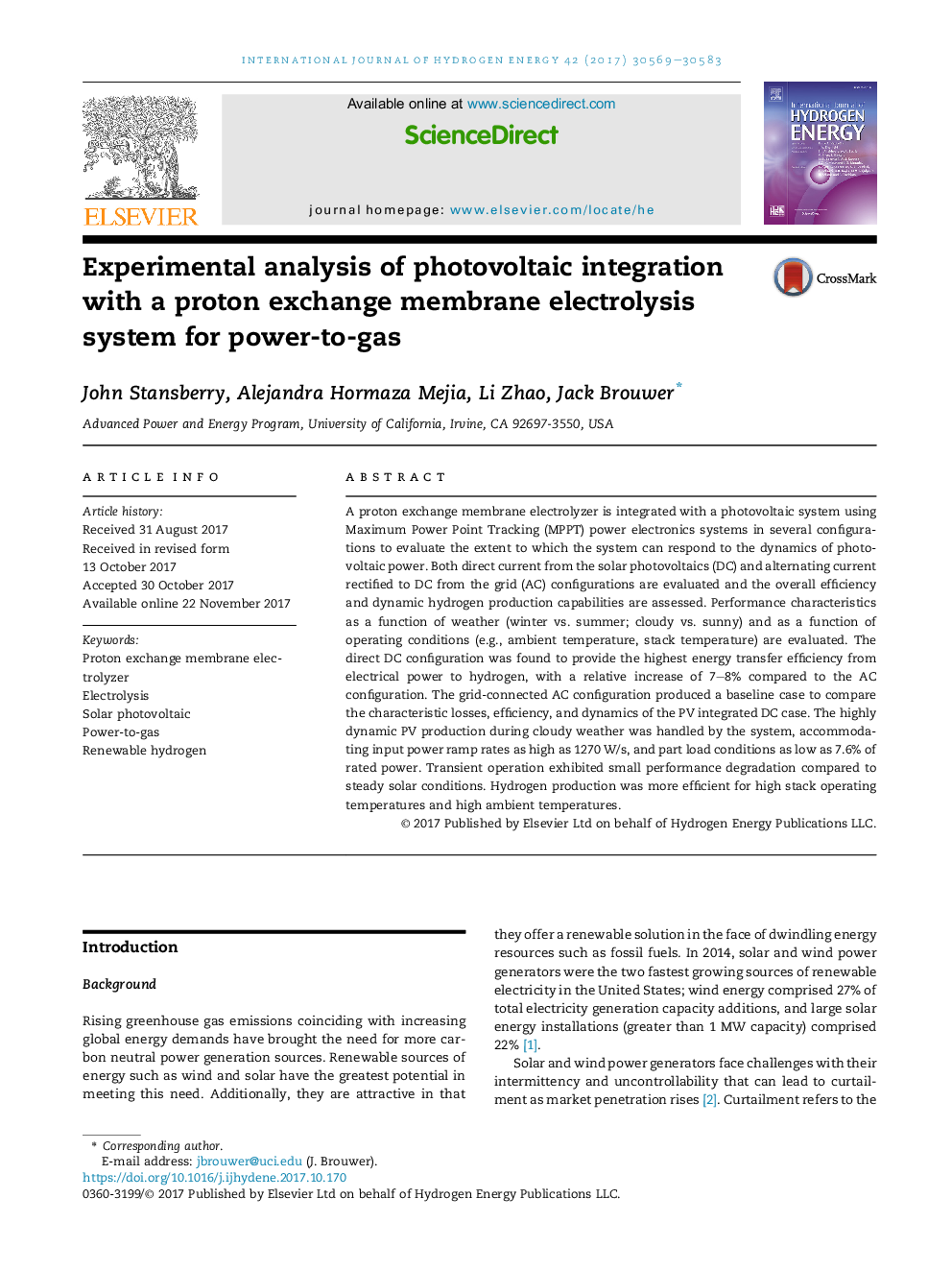| Article ID | Journal | Published Year | Pages | File Type |
|---|---|---|---|---|
| 7708631 | International Journal of Hydrogen Energy | 2017 | 15 Pages |
Abstract
A proton exchange membrane electrolyzer is integrated with a photovoltaic system using Maximum Power Point Tracking (MPPT) power electronics systems in several configurations to evaluate the extent to which the system can respond to the dynamics of photovoltaic power. Both direct current from the solar photovoltaics (DC) and alternating current rectified to DC from the grid (AC) configurations are evaluated and the overall efficiency and dynamic hydrogen production capabilities are assessed. Performance characteristics as a function of weather (winter vs. summer; cloudy vs. sunny) and as a function of operating conditions (e.g., ambient temperature, stack temperature) are evaluated. The direct DC configuration was found to provide the highest energy transfer efficiency from electrical power to hydrogen, with a relative increase of 7-8% compared to the AC configuration. The grid-connected AC configuration produced a baseline case to compare the characteristic losses, efficiency, and dynamics of the PV integrated DC case. The highly dynamic PV production during cloudy weather was handled by the system, accommodating input power ramp rates as high as 1270Â W/s, and part load conditions as low as 7.6% of rated power. Transient operation exhibited small performance degradation compared to steady solar conditions. Hydrogen production was more efficient for high stack operating temperatures and high ambient temperatures.
Keywords
Related Topics
Physical Sciences and Engineering
Chemistry
Electrochemistry
Authors
John Stansberry, Alejandra Hormaza Mejia, Li Zhao, Jack Brouwer,
